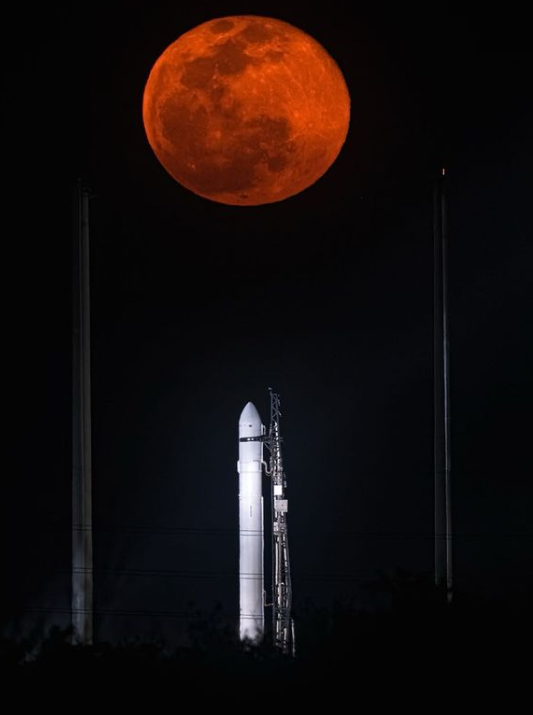In a key test flight, the California-based aerospace startup Relativity Space attempted to launch the world’s first 3D-printed rocket, Terran 1. The rocket is known as “Good Luck, Have Fun” (GLHF).
In its third launch attempt, the Terran 1 booster took off from Florida’s Cape Canaveral Space Force Station but failed to reach orbit and ultimately crashed into the Atlantic Ocean. The GLHF mission was a significant achievement for Relativity Space and spaceflight technology as a whole, as the two-stage Terran 1 rocket was the first to be primarily built using 3D printing. Terran 1 was composed of about 85% 3D printed materials by mass, but the company plans to increase this percentage to 95% for upcoming vehicles.
What caused the rocket’s failed launch?
During the flight, an anomaly was reported by mission controllers with the Terran 1 rocket’s upper stage, causing it to fail in reaching orbit. The purpose of the upper stage is to initiate separate engines mid-flight, enabling the rocket to attain the necessary velocity to enter space. The company aimed to place the rocket in a 125-mile-high orbit for several days before intentionally burning it up, including the upper stage, upon re-entry into the atmosphere.
Despite the unsuccessful launch, the mission had some promising outcomes. The first stage accomplished its intended purpose of lifting off and separating correctly. However, the upper stage appeared to ignite before shutting down, indicating that the rocket’s structural integrity remained intact.
Relativity Space has been conducting comprehensive tests on its 3D printed rocket engines and was originally scheduled to launch the Terran 1 rocket in 2022. The company aimed to demonstrate that the 7.5 ft. diameter 3D printed vehicle is sturdy enough to endure the rigors of launch and space travel. The launch is the initial phase in the company’s Mars mission plan. Last year, the company unveiled plans to collaborate with Impulse Space of El Segundo, California, and develop a Mars Cruise Vehicle and Mars Lander on a Terran R rocket, with no set date before 2024.
Failed to reach orbit, but still a success?
On March 22, 2023, Terran 1 achieved a “significant feat” by becoming the first methane-fueled rocket in the Western world to reach space, surpassing the 100 km Karman Line. In addition, Terran 1 also established itself as the first almost entirely 3D printed rocket to successfully fly and pass crucial stages, such as Max-Q, main engine cut-off (MECO), and second stage separation. This accomplishment is a “remarkable milestone not only for the aerospace industry but also for humanity as a whole,” according to Relativity Space.
Standing at a massive 110ft tall and 7.5ft wide, this two-stage, expendable rocket boasts nine Aeon engines in its first stage and one Aeon Vac in its second stage. All of the engines, along with the rocket’s structure, have been created using 3D printing technology. The engines rely on a combination of liquid oxygen (LOX) and liquid natural gas (LNG), which not only makes them suitable for rocket propulsion but also for reusability. Moreover, this technology represents a crucial step toward transitioning to methane-based propulsion, particularly important for missions to Mars.

Terran R – Relativity Space’s next mission
Relativity Space says it has developed a rocket named Terran R in its Factory of the Future. Designed for full reusability, the Terran R boasts an array of reusable components, including engines, first stage, second stage, and payload fairing. The rocket is scheduled to take off from the historic Cape Canaveral launch site, with the inaugural launch slated for 2024.
Terran R has unique aerodynamic features with algorithmically generated and optimized structures. Relativity Space’s proprietary 3D printing process has enabled the creation of algorithmically generated and optimized structures. The manufacturing process, driven by software and data, relies on foreign 3D printed materials and novel design geometries that were previously impossible with traditional manufacturing techniques, says the company. As a result, the industry is now experiencing a faster rate of progress and iteration, thanks to Relativity Space’s advanced approach to manufacturing.
Terran R is poised to provide commercial and government clients with unparalleled access to space, in low Earth orbit (LEO) and beyond. The rocket is designed to meet the growing demand for affordable space travel and to accommodate the company’s rapidly expanding pipeline of commercial interest. Moreover, the Terran R is expected to offer customers a point-to-point space freighter capable of missions between the Earth, Moon, and Mars.
Relativity Space announced a major milestone in the development of its Terran R rocket, securing a multi-launch contract with OneWeb, which brought the total backlog of launch contracts to an impressive $1.2 billion. Relativity Space raised $650 million in June 2021, a move intended to accelerate the production of the Terran R.
“We are excited about this agreement with Relativity, who we’ve long admired as a true disruptor in the aerospace manufacturing industry,” said Massimiliano Ladovaz, CTO of OneWeb. “Relativity will add new capacity to our launch program well into the future.”
What does the future of 3D printing for the next ten years hold?
What engineering challenges will need to be tackled in the additive manufacturing sector in the coming decade?
To stay up to date with the latest 3D printing news, don’t forget to subscribe to the 3D Printing Industry newsletter or follow us on Twitter, or like our page on Facebook.
While you’re here, why not subscribe to our Youtube channel? Featuring discussion, debriefs, video shorts, and webinar replays.
Are you looking for a job in the additive manufacturing industry? Visit 3D Printing Jobs for a selection of roles in the industry.
Featured image shows Terran 1 launch. Image via Relativity Space.



